Intellectual Development
Our students will learn key academic skills - like reading, writing and math - to encompass the knowledge and processes associated with intellectual development. As learners and meaning-makers, students take subject-specific concepts and content and transform them into a new understanding.
Goals
- Improve student success in literacy.
- Improve student success in numeracy.

98% Indigenous Graduation Rate
We are proud to announce that in 2024, our Indigenous students achieved an impressive 98% graduation rate. This success is a testament to the outstanding collaboration among our dedicated team of Indigenous Support Workers, Indigenous teachers, counselors, vice-principals, student case managers, and teachers. Our proactive approach, which includes bi-monthly meetings where stakeholders convene to comprehensively review student needs and celebrate successes, has been crucial. These regular gatherings allow us to address challenges promptly and tailor our support to meet the unique requirements of each student. The pride we take in our exceptional team is reflected in the positive outcomes for our Indigenous students. This achievement showcases the effectiveness of a collaborative and student-centered approach in fostering educational success and empowering our Indigenous youth for a brighter future.
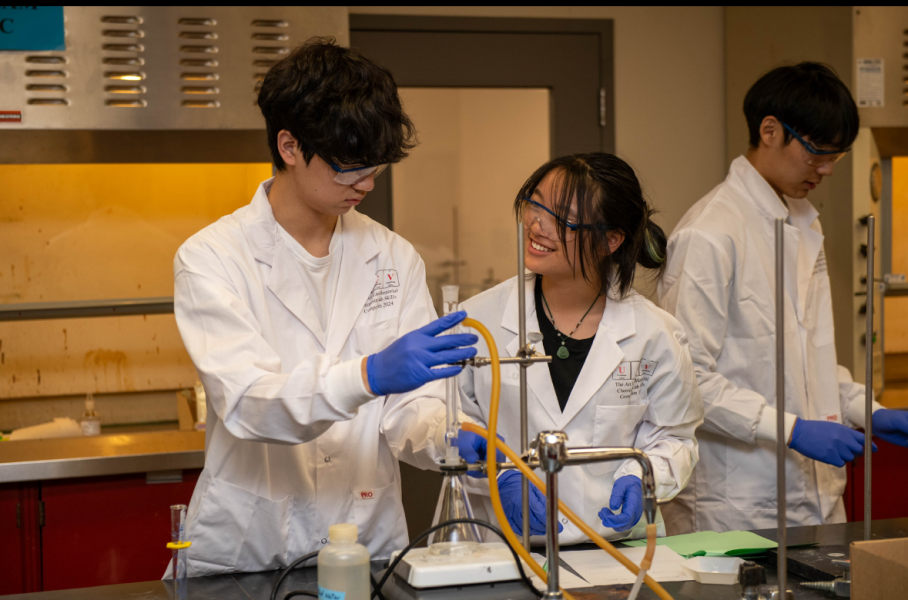
Lab Skills Chemistry Contest
On November 16, 2024, two Yale chemistry teams competed in the UFV Lab Skills Chemistry Contest. Team Two, consisting of Rehan Ahmed, William Nixon, Iris Wang, and Arwen Zheng, achieved first place in the competition. Team One, composed of Jinkyu Chang, David Paik, Jonathan Kim, and Lucy Wang, received an honorable mention. Over six intense hours, the teams completed two advanced-level labs: “Synthesis of Dulcin from Acetaminophen” and “Isolation of Beta Carotene from Spinach by Column Chromatography,” which extended beyond typical high school curricula. In the Lab, precision and teamwork come together to solve complex challenges and bring science to life. The photos capture students engaging in essential lab skills: accurately measuring solutions, carefully handling equipment, and meticulously documenting results. From using pipettes to conduct filtrations to observing melting points under a microscope, every moment demonstrates a commitment to scientific excellence. The atmosphere is charged with curiosity and focus as participants apply their knowledge to real-world scenarios, showcasing their proficiency and passion for laboratory work.
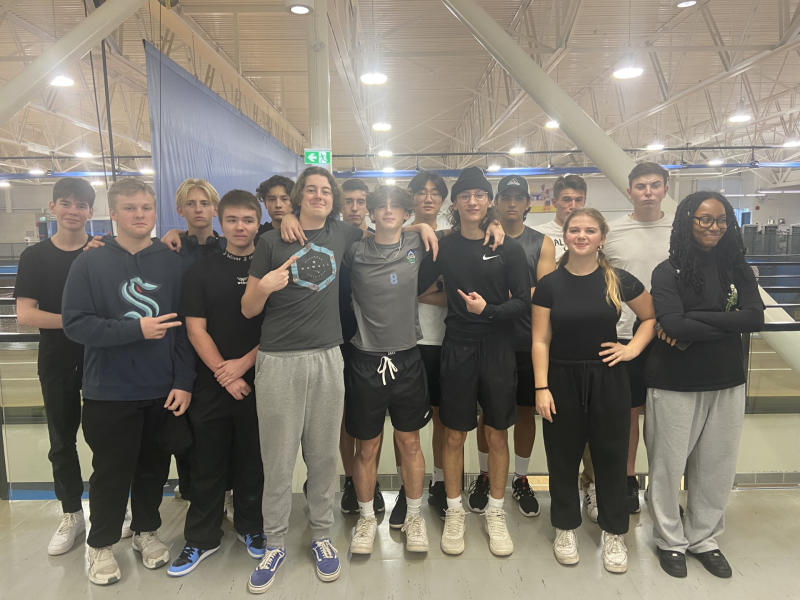
Alternative Learning Spaces
This is Yale Physical Health Education Strength and Conditioning class about to work out at the Abbotsford Recreation Center. This is part of their alternate enviornment exposure unit. Students are able to get out in the Yale community to showcase what they are learning and to enhance their fitness with different equipment and a different setting. Our Department stresses the importance of fitness, health and wellness being a lifelong journey for a good quality of life. Students often struggle with fitness, wellness and health training once they are out of Physical Health and Education class. They are often filled with anxiety, fear and lack the knowledge to continue their wellness journey without teacher guidance or the comfort they develop in Yale facility. Our hope is that students will get accustomed to the intricacies of a community workout facility to continue to grow their program. It is also our hope that they bring other students, friends and family who may be anxious about these kinds of facilities to work and enjoy the journey of good health and wellness. When the Yale community works and trains together, we grow together and positive energy flows through the community like an atmospheric river.
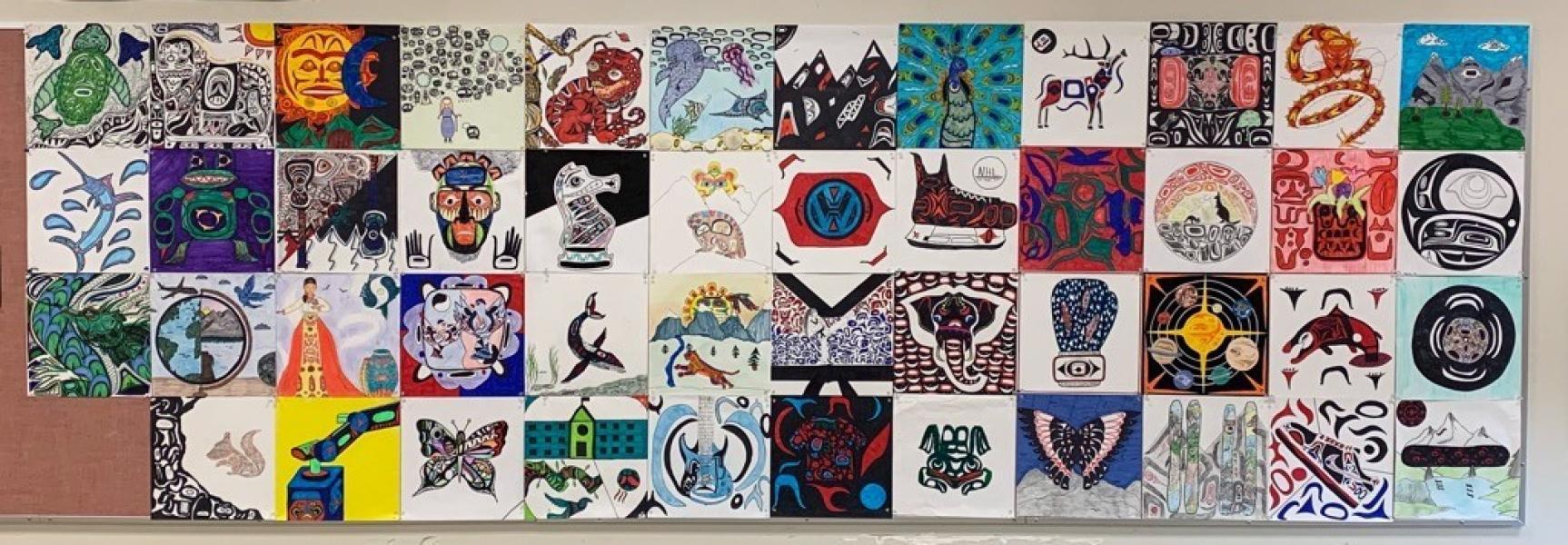
Diving Into Perspective & Significance
In BC First Peoples 12, students were exposed to the curricular competencies of Perspective and Significance. These art pieces are the result of our study of the culture and art of Northwest Coast First Peoples. Students studied Formline art styles and materials used by Northwest Coast Peoples and how these relate to land and culture. These artworks are inspired by the work of Haida artist Robert Davidson. Students merged this art style with important elements of their own lives. Here is the products of learning after studying this unit.
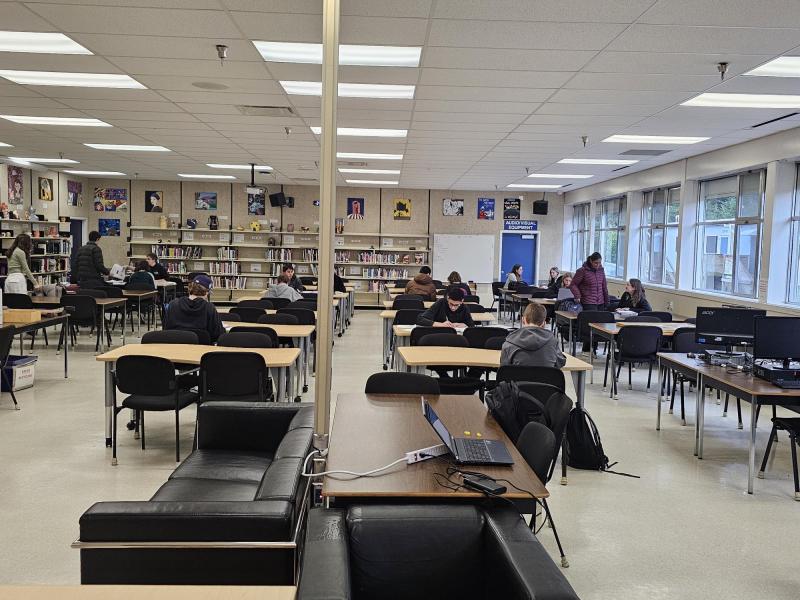
Homework Club
Homework club is an important after school support resource available to all students at Yale. Currently we have two teachers, and 5 Peer tutors available to give assistance each day.
We typically have 15 - 25 students on any average, day but often reach 30 students during mid terms and semester end. Most students are grade 9 and grade 10 students as they look to becoming comfortable with establishing their homework routines.This program is helping to ensure success for many of our students at Yale to ensure they successfully complete their courses.

Promoting Student Engagement
Math students engage daily working on non-permanent vertical surfaces. This allows students to collaborate together and take risks by being able to easily erase their work. It has been shown that standing also helps activate the brain. This daily activity allows all students to be engaged working on mastery of concepts which makes the understanding of new concepts introduced easier.
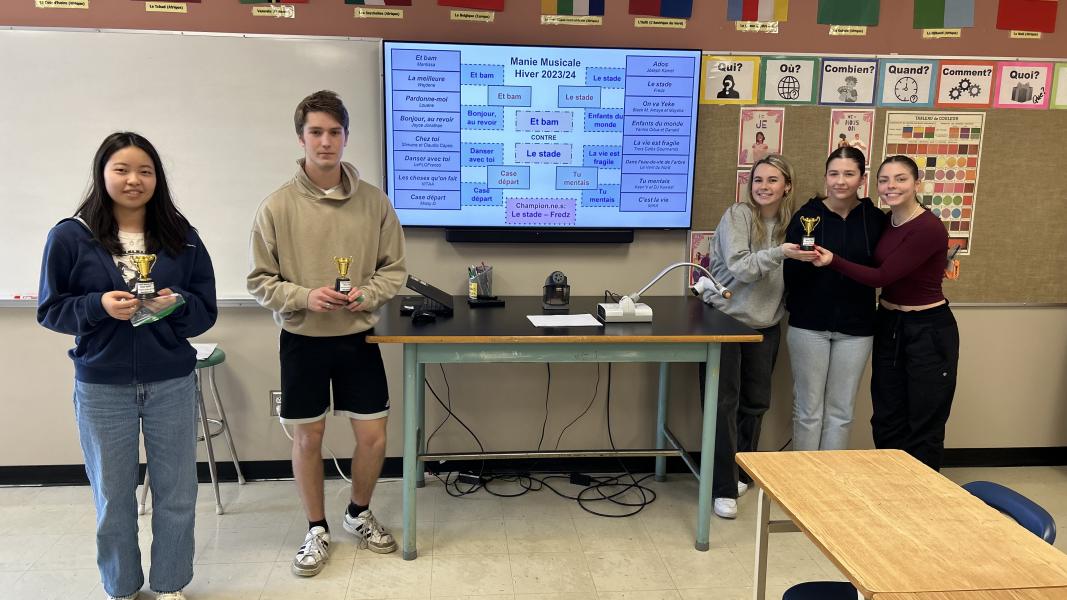
Manie Musicale - Music Madness
The Languages Department at Yale has been working on increasing cultural awareness and engagement related to the language students are studying. One way that we have been working on this is by exposing students to more music. Each semester, French students have been taking part in “Manie Musicale” which is inspired from the “March Madness” basketball tournament. Students begin by previewing 16 songs to make predictions on their first impressions. Throughout the next few weeks, students study the songs in more depth, respond personally with their opinions in the language, and vote on their favourites for each match-up until there is a winning song. Student predictions are then tallied, and students receive prizes for the closest predictions. This has been a favourite part of the course for most students – they are very enthusiastic about the competition, and many even add the songs to their music playlists. One student reported that their “Spotify Wrapped” year-end music summary included one of the French songs from “Manie Musicale” – a real life application and use of the language outside of the classroom!
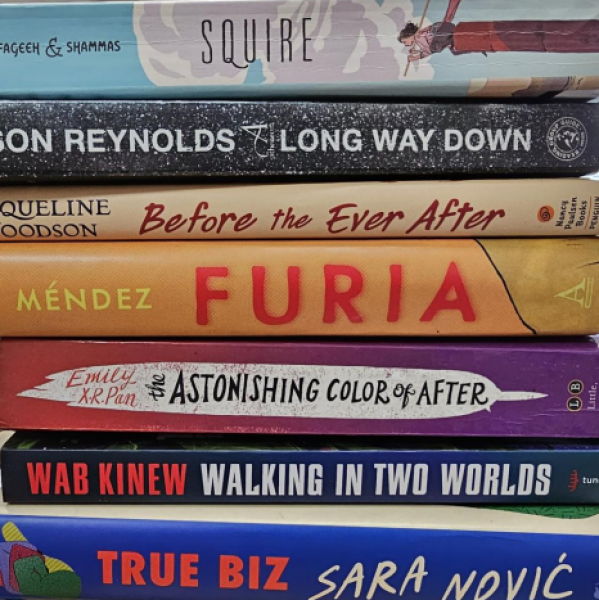
Reading Between and Beyond the Lines
Students in many English Language Arts classes, 9-12, have been exploring diverse perspectives and conflicts in our world through literature. To demonstrate their ability to form connections between the texts, self, and society, students compare or contrast important ideas in the book with their own life experiences or current or historical events. Responses have been positive. One teacher reflects, “I have always valued independent reading activities but struggled with assessing student learning. Using independent reading to assess student connections to literature takes the emphasis away from comprehension (did you read the whole book and understand it) and redirects the activity to reading for pleasure, but also finding meaning in texts. Students appear more engaged based on their reading habits in class, book talks (discussions), reflections and presentations.” Students have also shared their responses to the independent reading projects. • “[The book I read] ...deals with lots of heavy topics that aren't regularly talked about in the world. It gave me a better understanding of [complex] relationships and the difficult decisions that need to be made in any relationship.” • "I have had to deal with the issues that [the character] faced and I felt that it really opened a path for other...people who are going through the same things that [the character] and I are going through.”
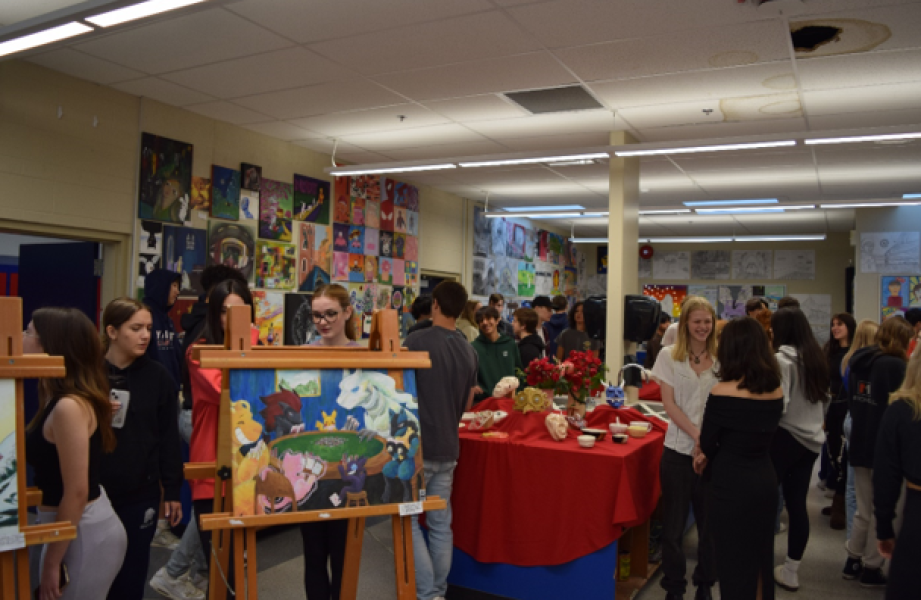
Yale Visual Arts Celebration of Learning
At the end of each semester, Yale art classes present and celebrate their work in the form of an art exhibition. This is an opportunity for students to show off their best work and to discuss their work with people who come to see it. Students learn about the many aspects of putting on an exhibition; planning, curating, displaying, advertising, pricing, selling, catering and clean-up. All staff and students, as well as Fraser Middle School staff and students are invited to come and see the show. At the start of the semester, all art students have an understanding that participation in this show is a requirement. This creates healthy motivation for students to do their best work throughout the semester. The art show also serves as an opportunity for middle school students to see what they will get to be a part of should they decide to study art during their time at Yale.